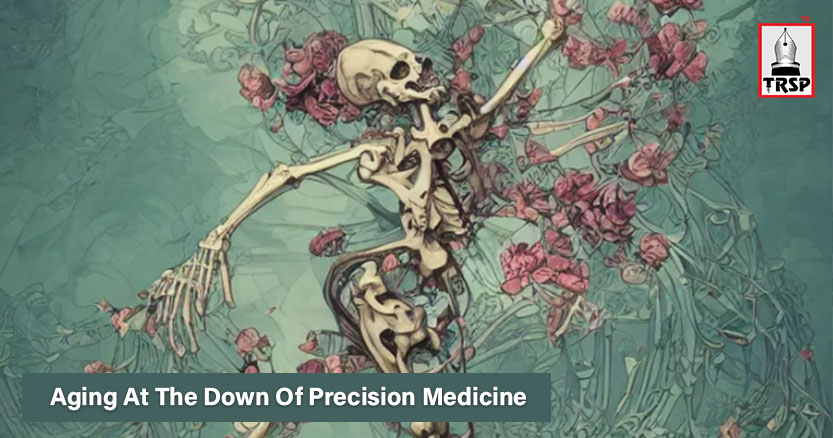Aging At The Down Of Precision Medicine

The idea is to die young as late as
possible.
-Ashley Montagu, Anthropologist
Historically, biological sciences
have been treated as soft science- science that lacks rigorous mathematical
modeling and therefore cannot predict outcomes precisely. This status of a
largely observational science is about to change to a quantitative one with the
advent of Systems Biology and other predictive approaches, with the potential
to revolutionize the field of medicine.
The dominant method of studying
biological systems so far has been the method called 'Reductionism', where a
system is best described by its component parts. 'Reductionism' has been
effective to describe physical systems with a level of certainty yielding
concrete mathematical models like Newton's laws of motion and even Einsteins'
General Theory of Relativity. But due to the inherent complexity of living
organisms, biological sciences lack even a rudimentary mathematical model,
rather widely relying on population parameters like mean values and ranges of
values with 95% confidence intervals. Such measurements have served our purpose
so far, but there is much to progress. Simply put, for biological sciences, we
are not there yet. Here comes the role of Systems Biology. Based on the principles
of 'Complex Adaptive Systems', Systems Biology aims to measure the various
components as well as their interrelations, revealing a complete description
and a set of mathematical formulas to predict their behaviors in a wide array
of situations. But as biological systems have been shaped by millions of years
of evolutions rendering a level of complexity the entirety of which is likely
beyond single human comprehension, a non-axiomatic, non-hypothetical
'Biomarker' based 'Big ata' approach is likely to be the best way to go. This
is exactly what 'Precision Medicine' is1.
Traditional medicine has been
successful at treating simple ailments with pretty straightforward ontology.
Precision medicine is likely to thrive uncovering and manipulating 'Complex Biological
Traits', a collection of interrelated pathways and functions that were
developed together in the way of evolution and the disturbance of which thus
creates diverse systemic symptoms. Examples of such 'complex biological traits'
are cancer and aging. While preventing and treating cancer is the first
priority of 'Precision Medicine Initiative'6, it won't be much
longer to adopt this approach to the problem of 'Aging'.
Although aging and longevity has
been used collectively in different contexts, these two confer significant
differences. Aging is a stochastic process, while longevity in a species is
evolutionarily conserved. This has led to two different approaches to address
the problem of aging.
Aging is an inevitable process occurring through an
immutable law of nature, the second law of thermodynamics. So we cannot stop
aging, but we can try to slow its progression by adopting a different
lifestyle. This has given rise to the popular anti aging techniques like
Caloric Restriction, Antioxidant therapy etc. It is mostly related to the
extrinsic rate of aging.5
On the other hand, Longevity in a
species is evolutionarily conserved. It means that it is already written in
their genome at what age a member of a species will mature sexually, and how
much maximum lifespan an organism can achieve4. There is significant
interspecies difference, so if we can identify a gene or pathway that leads to
a species' long life, we can utilize that pathway or gene to increase maximum
human lifespan. There is also intraspecies diversity, with some groups of
humans living consistently longer lives (e.g. Japanese, Ashkenazi Jews). Close
scrutiny of their genetic makeup can also reveal significant findings.
A third approach has been popularized recently ascribing
aging to epigenetic changes. According to this school of thought, aging occurs
due to accumulated genomic information loss, and epigenetic factors like
Sirtuin have the capability to repair and maintain the integrity of the genome,
thus slowing and even reversing the effects of aging3.
To implement these antiaging,
longevity promoting techniques, we will need 'Precision medicine' to make
decisions for individual person. Public health measures like caloric
restriction, exercise can help achieve antiaging to some extent, but there is
significant individual variation, so one prescription may not fit all.
Moreover, there is differential organ aging, meaning different organs of an
individual age at different rates7. So anti-aging intervention for
one kind of 'organ-ager' may not be appropriate for another.
Adopting Precision Medicine will take more time, and technical problems to implementation will not be the only obstacles. And there is a growing consensus among scientists that humankind or at least some of them will become immortal -mortals with no maximum lifespan- within this century. Whether it becomes true or not, human healthspan and lifespan will almost certainly increase with effects on personal motivations, interpersonal relationships and even human fertility with radical consequences on our species as a whole8. So the ethical burden lies on our shoulders as to how to safely adopt and adapt these changes.
Bibliography:
1. Mandana Hasanzad, Precision
Medicine in Clinical Practice
2. James F. Fries, On the compression of morbidity: from 1980
to 2015; Handbook of the Biology of Aging 3. David A. Sinclair, Matthew D.
LaPlante, Lifespan: Why We Age and Why We
Don’t Have To
4. Xiaqing Zhao, Daniel E.L.
Promislow, Senescence and Aging; The
Oxford Handbook of Evolutionary Medicine
5. Roger B. McDonald, Biology
of Aging
6. Precision Medicine Initiative
(PMI) report by National Academy of Sciences (NAS), USA, Biomarker Tests for Molecular Targeted Therapies: Key to Unlocking
Precision Medicine
7. Alessandro Ori et al, Cell
Systems, volume 1, issue 3, Integrated
transcriptome and proteome analyses reveal organ specific proteome
deterioration in old rats
8. Yuval Noah Harari, Homo deus: A Brief History of Tomorrow
Sk. Mehedi Hasan
Dhaka Medical College

